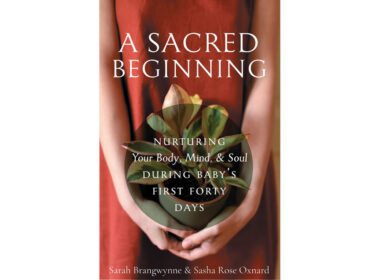Natural Family Planning (NFP) and Fertility Awareness-Based Methods (FABM) are finally starting to gain mainstream coverage, but the information being presented isn’t always accurate. Misconceptions about NFP and FABM are fairly prominent among the general public and even medical professionals, and as a result, the truth is often met with skepticism.
Here are a few misconceptions that I hear on a regular basis that I’d love to clarify.
1. Fertility Awareness is NOT the rhythm method or period tracking!
Many people confuse Natural Family Planning and Fertility Awareness-Based Methods with an outdated form of cycle charting where users made an educated guess on when they would ovulate based on the length of their previous cycles, known as the rhythm method. The modern methods taught by certified instructors today are far more researched, and far more accurate.
Fertility awareness today provides women with modern natural methods of birth control by teaching them to observe and chart multiple bodily signals every day to determine when a woman is fertile, including the 24-48 hour period in which she ovulates. Unlike the rhythm method, Fertility Awareness-Based Methods do not involve any guesswork, because a woman’s body tells her what is happening throughout the cycle; FABMs teach you how to understand your body’s language. As a result, this month’s chart has nothing to do with last month’s chart or that of any previous cycle.
Of course, looking at your charts from multiple cycles can help you understand your body’s typical pattern (and even help diagnose a multitude of health issues), but you don’t make any predictions, observations, or decisions based on that pattern; you keep reading the current cycle’s biomarkers.
2. Fertility Awareness DOES NOT require regular cycles!
Because NFP and FABM only take into account what is actually happening in the current cycle, users of these methods do not need to have regular cycles to effectively use them. Fertility Awareness-Based Methods can be used while breastfeeding, throughout menopause, and even with conditions such as PCOS or endometriosis. You can have long cycles, short cycles, anovulatory cycles, or unpredictable cycles. You can have a longer than average follicular or luteal phase. The key is, if you have taken the time to learn a modern fertility awareness method, your chart will reflect your unique cycle.
Again, this works because of daily observations in the present and therefore never involves a prediction about fertility based on a previous cycle.
While charting with cycle abnormalities is entirely possible, it is important to acknowledge that it comes with extra challenges. For example, longer cycles with lots of fertile biomarkers (due to failed attempts at ovulation) can be frustrating, especially while trying to avoid pregnancy, but also when you try to achieve pregnancy. Finding a certified instructor, along with a method that works for your lifestyle, will be extremely beneficial. In fact, your chart will likely become one of your most valuable tools in your healthcare journey.
3. Fertility Awareness DOES work!
Often times, when reading discussions on FABMs, I see statements like, “it is irresponsible to promote this as birth control”; “ you can get pregnant at any point in your cycle, ovulating or not”; or “I know people who use this and they have a ton of kids!” While all of these statements may have bits of truth, they aren’t a fair representation of FABM or NFP.
It’s true, you don’t have to be ovulating to get pregnant. Once ovulation has occurred, the egg is only good for 24 hours, but, sperm can live in in the woman’s body in the right conditions for 5 days. All Fertility Awareness-Based Methods, however, account for this, plus a short post-ovulation period of fertility to account for a delayed ovulation (in case ovulation occurs the day after it’s noted). So yes, you can get pregnant if you have intercourse before ovulation, but your chart, method protocol, and reproductive goals will inform you if intercourse is a good idea or not.
This leads me to my next point, which is that there is a huge difference between an actual method failure and a user error. Examples of user errors are: when signs are misinterpreted or recorded, or when a couple chooses to “risk it” by having intercourse on a fertile day. FABM users sometimes choose to use barrier methods during times of fertility, but remember, at that point you are relying on the effectiveness of your secondary method, not the Fertility Awareness-Based Method. Actual FABM failures are rare, but like with all methods of birth control, even the Pill, they do happen. FABM typical effectiveness rates, ranging from 90-98%, are often misreported as far lower. (In fact, Natural Womanhood is currently petitioning the CDC to try to update its site with accurate data.) Check here for the most accurate information.
If you are wary about using FABM because you know couples who use it and “have a ton of kids,” it’s important to remember a few things. First, many Natural Family Planning users want a lot of kids; don’t assume that all of those children are method failures! Just because a couple says that they use NFP, doesn’t mean they are using it to avoid pregnancy every month. One of the beautiful components of NFP and FABM is the ability to re-assess one’s reproductive goals each month. Couples who use these methods enjoy the freedom and flexibility to make choices daily depending on their charts.
So if you’re considering using a Fertility Awareness-Based Method for yourself, whether as a natural form of birth control or as a charting tool to learn more about health conditions, we encourage you to 1) learn the facts, and 2) don’t let the skeptics get you down!







